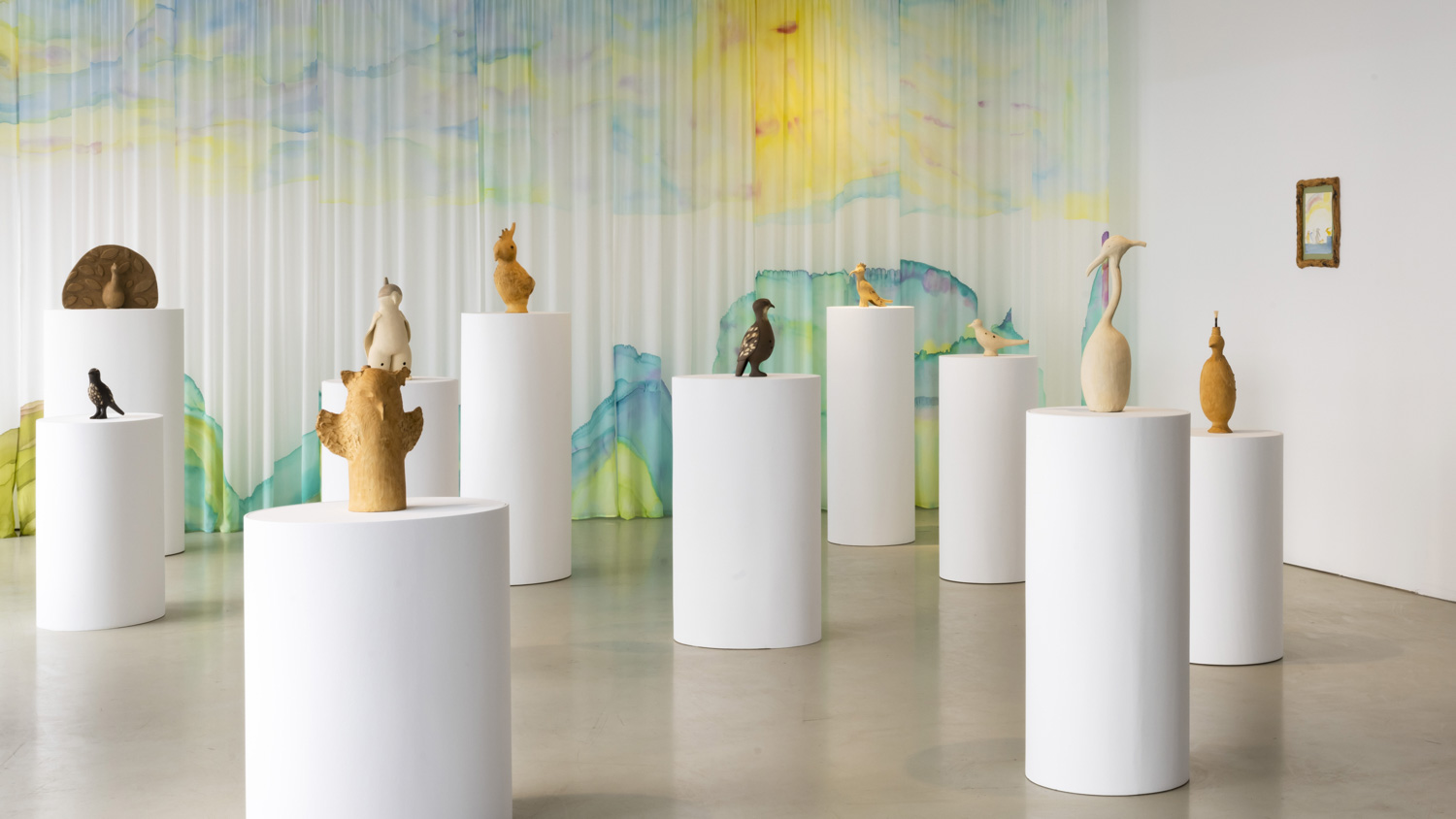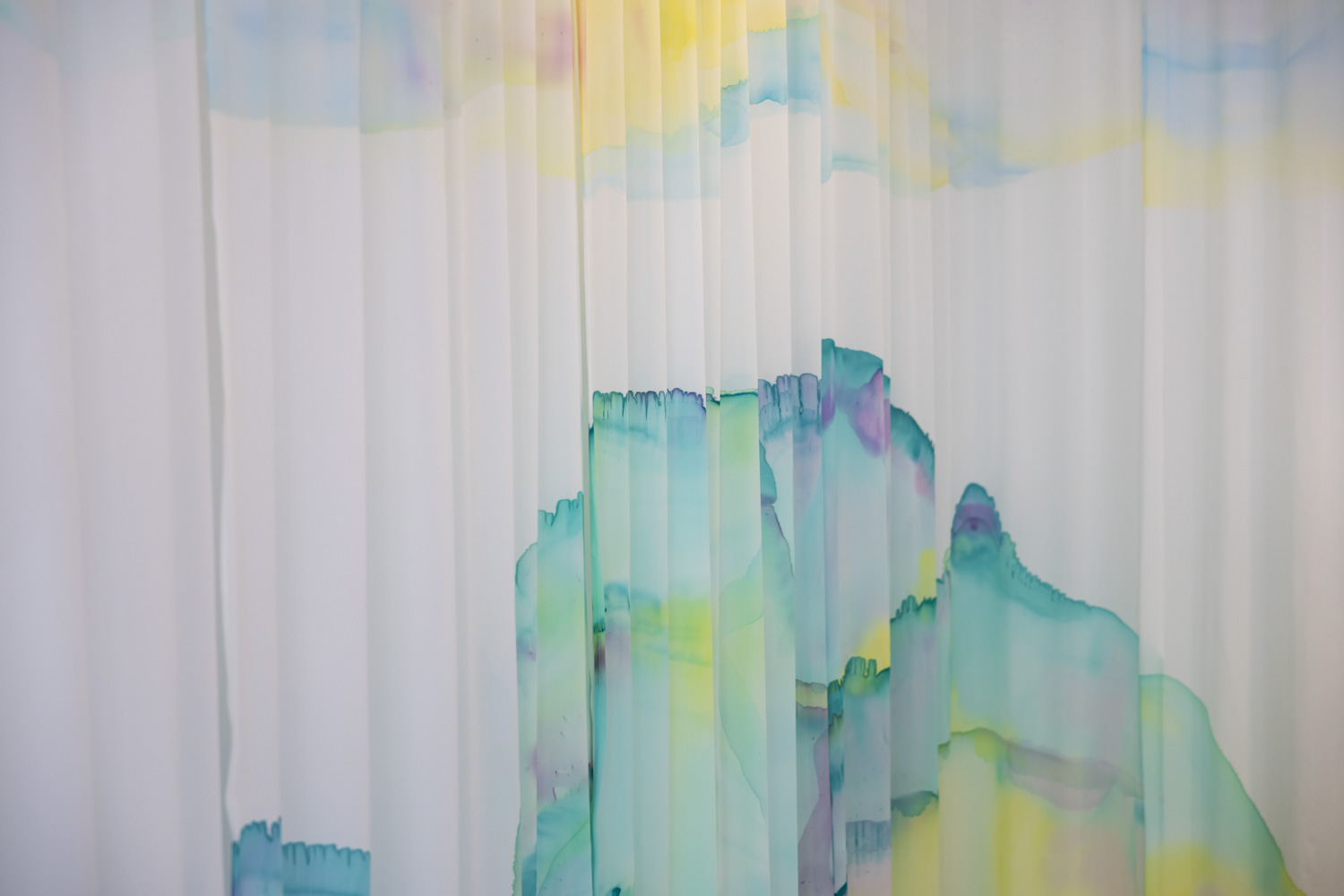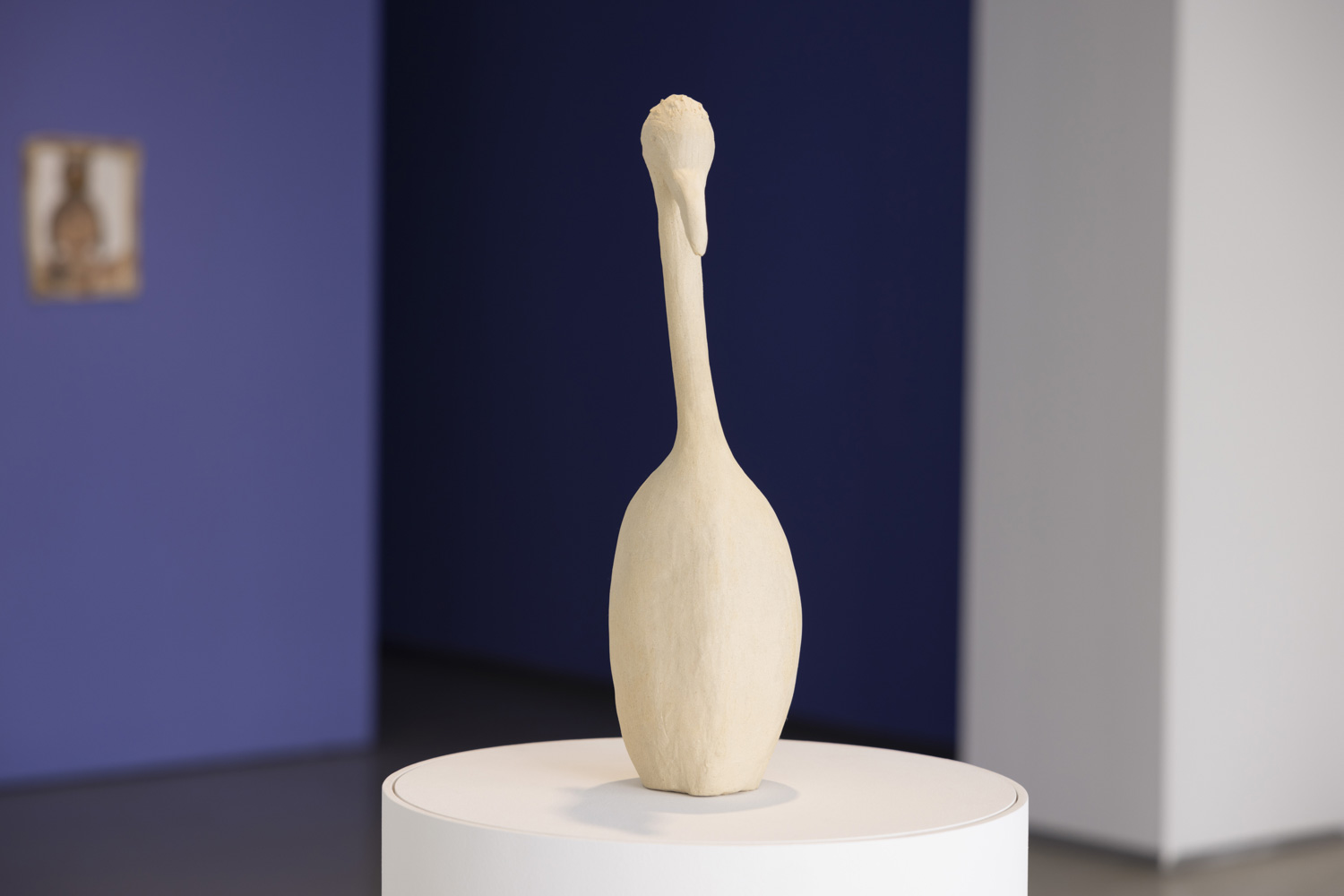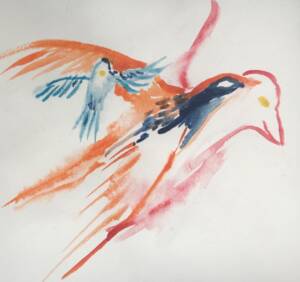The works by French-Algerian artist Katia Kameli invite visitors to reflect on their own quests and identities. At ifa Gallery Berlin, Kameli will be debuting her new film Le cantique des oiseaux, taking audiences on a journey of translation.
Curated by Valerie Chartrain.
The exhibition by Katia Kameli takes its inspiration from the Conference of the Birds by the twelfth century Persian Sufi poet Farîd-ud-Dîn Attâr. In his epic poem, we follow thousands of birds on their journey in search of the mythical bird Simurgh, an allegory for the divine. After travelling through seven valleys, only thirty birds reach their destination and ultimately realize that Simurgh is their own reflection. The poet seems to suggest that every journey is a path of self-discovery.
For the exhibition The Canticle of the Birds, the birds from the allegorical poem are shaped out of ceramics, an ancient material present in many cultures, making symbolic reference to the origin of life. The sculptures also double as musical instruments, akin to ocarinas, and can be played as flutes; they can be heard in the new film by Katia Kameli, Le Cantique des oiseaux, which is premiering at ifa Gallery Berlin. The film brings together dancers at the garden of Rayol on the French Mediterranean coast, each representing a different bird species. Each bird and thus each dancer follows distinct choreography and produces a unique sound. The dancers were directed by Youness Anzane and are accompanied by musical compositions by Aurélie Sfez.
The film is also an adventure in translation. Far from being a simple transposition from one language to another, translation serves here as a permeable mechanism that blends traditions, histories, and cultures. These stories all seem to be versions of a single original, hybrid story with plural and porous influences.
In this work, Katia Kameli also offers her own translation of the story by adapting its elements into various forms and adding new dimensions of music, dance, and geography. She shows us how these birds’ search for a better future doubles as a metaphor for life: they have traveled together as a group and reunite at the end of the journey. This reunion can be understood as a step forward, a utopia that shows what is possible together.
The exhibition combines Katia Kameli’s ceramic sculptures, watercolors, silk paintings, her sketches, and the film into one poetic whole. Kameli invites visitors on an inner journey imbued with spirituality and beauty, a reflection on our own quests and identities. What are we if not the sum of all the stories that came before us?

© Katia Kameli, VG Bild-Kunst, Bonn 2023
Katia Kameli lives in Paris and works with various media, primarily film and video. Since the early 2000s, she has been creating a dense, multifaceted body of work. With her dual French and Algerian culture, she crosses boundaries between territories and interrogates the blind spots of history. She connects far-flung facts, ties loose links, and gives voice to silenced words to write counter-narratives. Her research fuses and interlaces to integrate manifold perspectives. She was shortlisted for the 2022 Aware prize and honoured by the Mondes Nouveaux program.
Valerie Chartrain, lives in Paris and Berlin. Since 2002, Valerie Chartrain has been developing curatorial and discursive events both on her own and collectively. She works with artists, galleries, and other institutions to produce texts, exhibitions, catalogues, and events. She is the co-editor-in-chief and co-founder of Petunia, a feminist and intersectional magazine on art and culture since 2009. She is also a creative strategist and conceptualizes, implements, and directs projects that help organizations envision their futures.



















